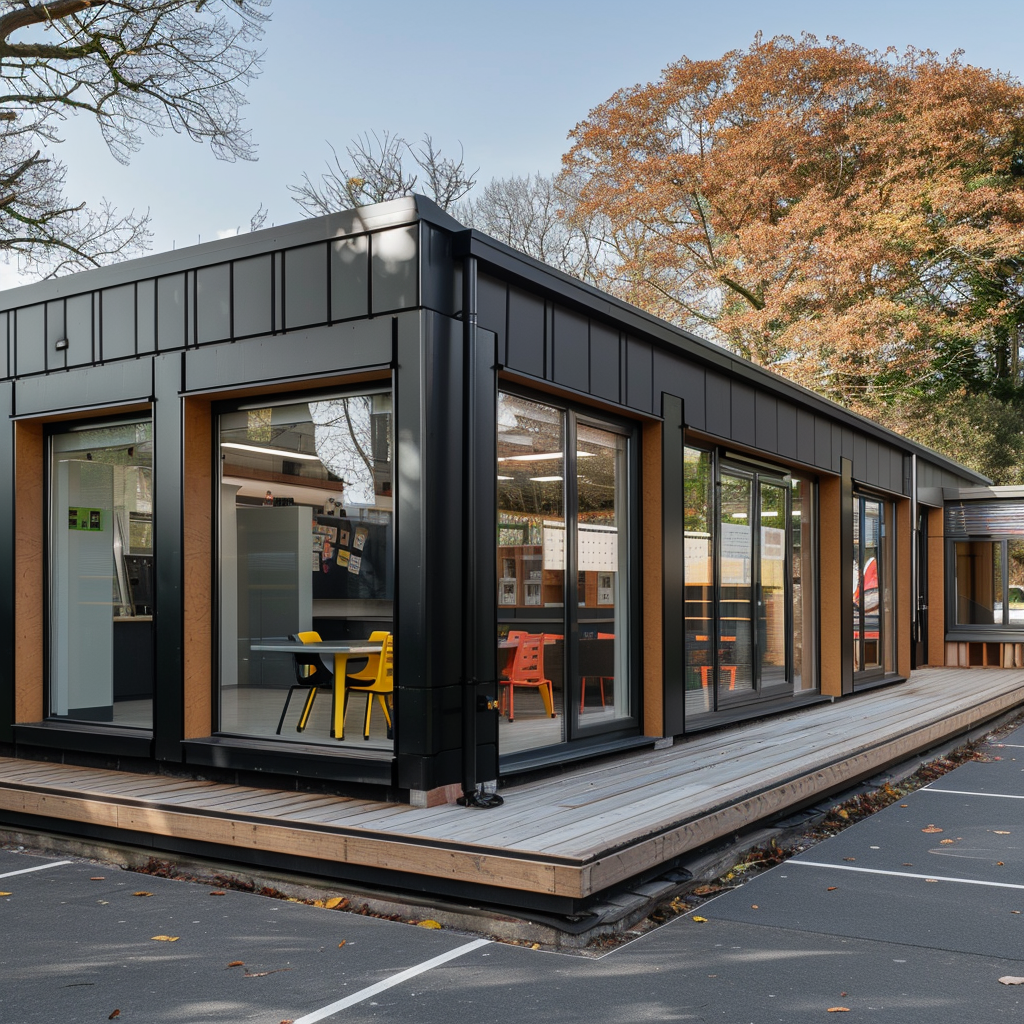
Modular buildings have gained immense popularity in the construction industry for their numerous advantages, including cost-effectiveness, flexibility, and speed of construction. However, one often overlooked benefit of modular buildings is their sustainability, which can significantly benefit schools in terms of reducing their carbon footprint. This blog post will explore how modular buildings can help schools become more eco-friendly and contribute towards a greener future.
Reducing construction waste: Traditional construction methods often produce much waste, including excess concrete, wood, and other building materials. This not only adds to the project costs but also hurts the environment. On the other hand, modular buildings are constructed in a controlled factory environment, which minimises waste material. Precision cutting and measuring materials in a factory setting means that the production process is highly efficient, resulting in significantly less waste than traditional construction. This, in turn, reduces the carbon footprint of the school project. Energy efficiency: Modular buildings are designed to be energy-efficient, meaning they are built to conserve energy and reduce operational costs. Modular construction's insulation and sealing techniques ensure that the buildings are airtight, minimising energy loss.
Additionally, the installation of energy-efficient appliances and lighting systems further reduces the energy consumption of the building. With the rising need for schools to adopt sustainable practices, modular buildings provide a practical solution by reducing the energy demands of school buildings.
Water conservation: One of the essential aspects of sustainability is the conservation of natural resources, particularly water. Modular buildings are designed to be water-efficient, with features such as low-flow faucets and toilets. Furthermore, using rainwater harvesting systems in modular buildings can significantly reduce the school's water consumption, making it environmentally friendly and cost-effective. By lowering the school's water consumption, modular buildings contribute towards a more sustainable future.
Incorporation of renewable energy sources: Many modular building suppliers have started incorporating renewable energy sources, such as solar panels, into their designs. This allows schools to meet their energy demands in an eco-friendly manner while reducing their reliance on traditional energy sources. The modular design of these buildings makes it easier to install and maintain these renewable energy systems, making them a more viable option for schools looking to reduce their carbon footprint.
Sustainable materials: Modular buildings are constructed using sustainable materials, such as recycled steel and environmentally friendly timber. These materials have been sourced in an ethical and sustainable manner, making them a better alternative to traditional building materials. Furthermore, modular construction allows for easy replacement of materials in case of damage or wear and tear, resulting in a more sustainable and cost-effective building maintenance process.
In conclusion, modular buildings offer many benefits to schools, including sustainability and a reduced carbon footprint. With the increasing focus on environmental conservation and sustainability, modular buildings provide a practical solution for schools looking to reduce their impact on the environment. By choosing to construct their buildings using modular methods, schools can play a crucial role in creating a greener and more sustainable future for generations to come.
